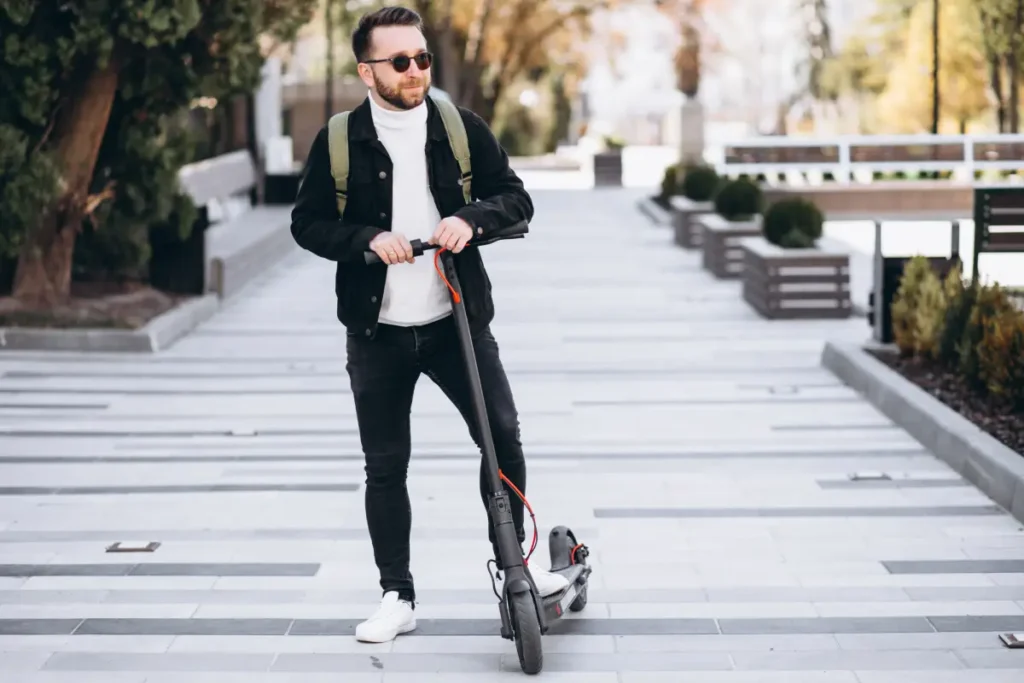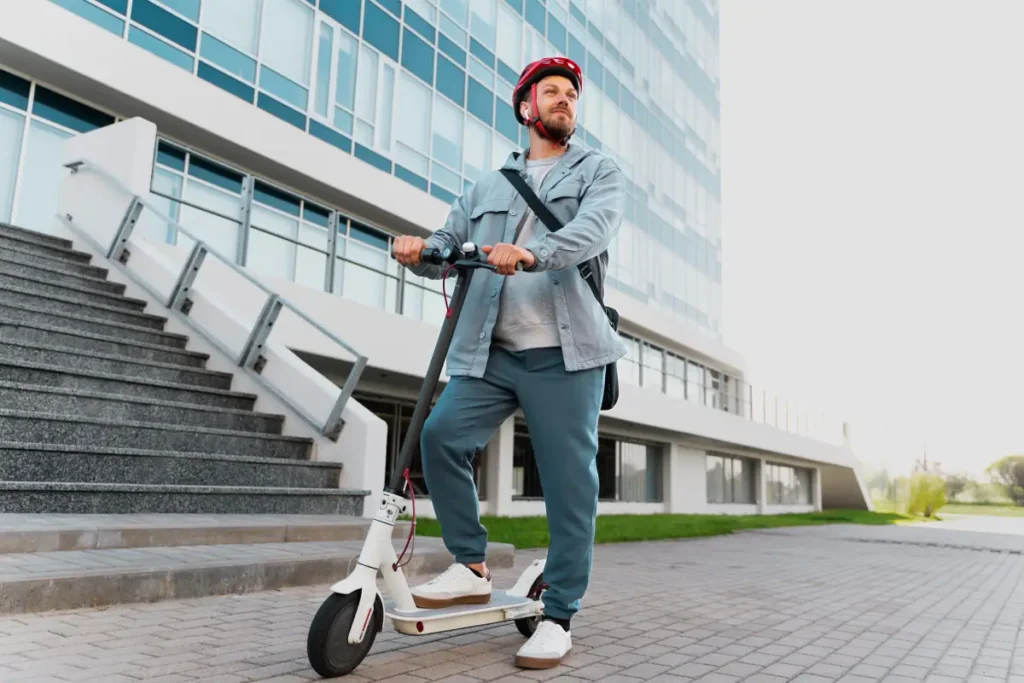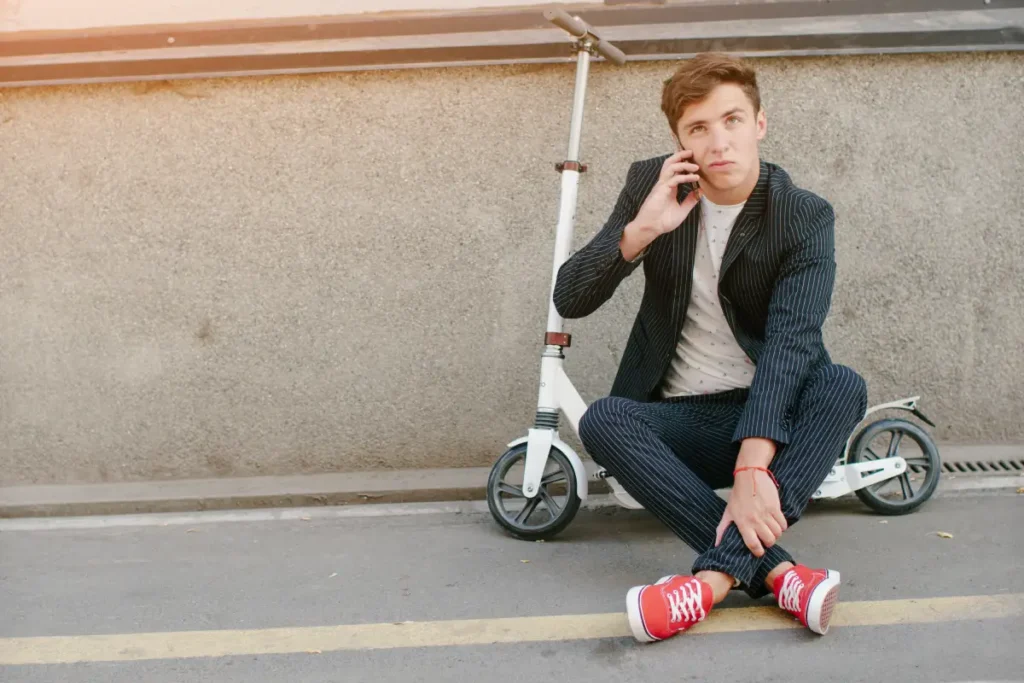A boys electric scooter has transformed outdoor play for children everywhere. These modern mobility devices combine fun and technology in ways that traditional toys cannot match. Parents now have exciting options that keep their children active while introducing them to eco-friendly transportation.
Understanding Electric Scooters for Boys
boys electric scooters for represent more than just another toy. They serve as tools for independence, exercise, and outdoor exploration. Unlike regular kick scooters, these motorized versions use rechargeable batteries to power small motors. This design lets children travel longer distances without getting tired.
The market offers numerous models designed specifically for young riders. A boys electric scooter typically features smaller frames, lower speeds, and enhanced safety features compared to adult versions. Manufacturers understand that children need different specifications than grown-ups.
Most parents appreciate how these devices encourage outdoor activity. Children who might otherwise stay indoors playing video games become excited about riding around the neighborhood. The electric scooter for kids bridges the gap between modern technology and traditional outdoor play.

Selecting the Right Boys Electric Scooter
Choosing the perfect rechargeable scooter for boys requires careful consideration of several factors. Age plays a crucial role in this decision. Younger children need different features than teenagers approaching adulthood.
Age Considerations: Children between 6-8 years old benefit from slower speeds around 10 mph. Older kids aged 9-12 can handle speeds up to 15 mph. Teenagers may want faster models that reach 18-20 mph.
Weight Capacity: Every kids electric scooter has maximum weight limits. Most models support 120-220 pounds. Always check this specification to ensure safety and proper performance.
Battery Life: Quality matters here significantly. Look for batteries lasting 40-60 minutes of continuous use. Some premium models offer 90 minutes or more. Consider how far your child wants to travel during typical rides.
Speed Settings: The best boys electric scooter includes adjustable speed controls. This feature lets parents limit maximum speed for beginners. As skills improve, you can gradually increase the speed ceiling.
Build Quality: Sturdy construction using aluminum or steel frames ensures longevity. Children play rough, and their equipment must withstand daily wear and tear.
Portability: Foldable designs make transportation and storage much easier. This feature proves especially valuable for families with limited storage space or those who travel frequently.
Essential Safety Features
Safety should never be compromised when selecting a boys electric scooter children will use. Modern models incorporate numerous protective features that parents should prioritize.
Braking Systems: Dual braking systems provide the best stopping power. Look for models combining electronic brakes with mechanical foot brakes. This redundancy ensures your child can stop quickly in emergencies.
Lighting: LED headlights and tail lights improve visibility during evening rides. Some models include side lights that make riders visible from all angles.
Tire Quality: Pneumatic (air-filled) tires offer better shock absorption than solid rubber. However, they require maintenance. Solid tires never go flat but provide rougher rides on uneven surfaces.
Speed Limiters: Parental controls that restrict maximum speed help beginners learn safely. These settings prevent children from riding faster than their skill level allows.
Grip Tape: Non-slip deck surfaces prevent feet from sliding during rides. This feature becomes especially important in wet conditions.
Top Safety Practices for Young Riders
Owning a boys kick scooter electric device comes with responsibilities. Teaching proper safety habits ensures enjoyable experiences without injuries.
Protective Gear: Helmets are non-negotiable equipment. Additionally, knee pads, elbow pads, and wrist guards protect against scrapes and fractures. Many injuries occur when riders lose balance or hit obstacles.
Traffic Rules: Children must understand basic traffic laws. Teach them to stop at intersections, look both ways, and yield to pedestrians. Sidewalks and bike paths offer safer routes than streets.
Weather Awareness: Wet surfaces dramatically reduce traction. Riders should avoid using their boys electric scooter during rain or on wet pavement. Similarly, extreme cold reduces battery performance.
Regular Inspections: Before each ride, check brakes, tires, and battery levels. Loose parts or worn components need immediate attention. This habit prevents mechanical failures during rides.
Supervision: Younger children require adult supervision until they demonstrate consistent safe riding habits. Gradually increase independence as skills and judgment improve.
Distraction Avoidance: Riders must focus entirely on their surroundings. Using phones or listening to music through headphones while riding creates dangerous distractions.
Maintenance Tips for Longevity
Proper care extends the life of boys electric scooter for kids significantly. Regular maintenance prevents expensive repairs and ensures optimal performance.
Cleaning: Wipe down your scooter after each use, especially after riding through dirt or puddles. Use damp cloths rather than water hoses, which can damage electrical components.
Tire Maintenance: Check tire pressure weekly for pneumatic tires. Maintain manufacturer-recommended PSI levels. Inspect tires for wear, cracks, or embedded objects.
Battery Care: Follow charging instructions precisely. Avoid overcharging, which degrades battery capacity over time. Store the boys electric scooter with batteries at 50-80% charge during extended periods of non-use.
Brake Adjustments: Test brakes regularly and adjust tension as needed. Worn brake pads require replacement to maintain stopping power.
Bolt Tightening: Vibrations during rides gradually loosen bolts and screws. Monthly inspections should include tightening all fasteners.
Storage: Keep your rechargeable scooter for boys in dry, temperature-controlled environments. Extreme heat or cold damages batteries and electronics. Basements and garages usually provide suitable storage conditions.

Developing Riding Skills
Mastering a boys electric scooter takes practice and patience. Beginners should progress through skill levels systematically.
Balance Training: Start by having children stand on the stationary scooter. They should feel comfortable maintaining balance before adding movement.
Starting and Stopping: Practice begins with short distances. Children should learn smooth acceleration and controlled braking before attempting longer rides.
Turning Techniques: Gentle body weight shifts combined with handlebar movements create smooth turns. Sharp turns require slowing down first.
Speed Management: Beginners should ride slowly while building confidence. Gradually increase speed only after demonstrating control at lower speeds.
Obstacle Handling: Set up practice courses with cones or markers. This training helps children learn to navigate around objects safely.
Popular Accessories and Upgrades
Enhancing your electric scooters for boys with accessories improves both function and enjoyment.
Phone Mounts: Secure holders let riders use GPS navigation or track their rides without holding devices.
Storage Solutions: Handlebar bags or rear racks provide space for water bottles, snacks, and small personal items.
Custom Grips: Ergonomic handlebar grips reduce hand fatigue during long rides. They also add personal style.
Upgraded Lights: Additional LED strips or reflective tape increases visibility further. These modifications prove especially valuable for riders in urban areas.
Bells and Horns: Audible warnings help prevent collisions with pedestrians and other riders.
Leading Brands and Models
Several manufacturers dominate the boys electric scooter market with proven track records.
Razor: This brand pioneered electric scooters for children. Their E100 and E200 models remain popular choices for different age groups. Razor products emphasize durability and affordability.
Segway: Premium models from Segway include advanced features like app connectivity and sophisticated suspension systems. Their Ninebot series offers excellent build quality.
Gotrax: These scooters provide excellent value without sacrificing essential features. The GKS model specifically targets younger children with appropriate speed limits and safety features.
Xiaomi: Known for sleek designs and reliable performance, Xiaomi produces both budget and premium options. Their scooters often include smart features appealing to tech-savvy families.
Swagtron: This brand focuses on youth models with emphasis on safety certifications and user-friendly designs. Their products meet strict safety standards.
Environmental and Social Benefits
Choosing a boys e-scooter contributes positively to both personal health and environmental sustainability.
These devices produce zero emissions during use. Teaching children about eco-friendly transportation establishes lifelong environmental awareness. Electric scooters also reduce dependence on car trips for short distances.
Beyond environmental benefits, scooters encourage social interaction. Children often ride together, forming friendships and communities. Group rides create opportunities for outdoor socialization away from screens.
Physical activity naturally increases with regular scooter use. Balance, coordination, and core strength all improve through riding. This exercise happens naturally during fun activities rather than forced workouts.
Future Innovations in Youth Electric Scooters
Technology continues advancing in the boys electric scooter children’s market. Upcoming innovations promise even better experiences.
Smart Connectivity: GPS tracking lets parents monitor their child’s location. App integration provides ride statistics and maintenance reminders. Some models will offer geofencing capabilities that alert parents when children leave designated areas.
Battery Technology: Improved batteries will offer longer ranges and faster charging times. Solid-state batteries may eventually replace current lithium-ion technology.
Safety Enhancements: Future models might include collision detection systems and automatic emergency braking. AI-powered features could adjust performance based on rider skill levels.
Sustainable Materials: Manufacturers increasingly use recycled and eco-friendly materials. This trend aligns with growing environmental consciousness among consumers.
Customization Options: Digital displays and programmable LED lights will let riders personalize their scooters extensively. Modular designs may allow easy upgrades and repairs.
Frequently Asked Questions
Q. What age is appropriate for a boys electric scooter?
A. Most manufacturers recommend electric scooters for children aged 8 and above. However, some models designed for younger riders accept children as young as 6 years old. The appropriate age depends on the child’s size, coordination, and maturity level. Always check the manufacturer’s age recommendations and start with lower-speed models for beginners.
Q. How long does the battery last on a youth electric scooter?
A. Battery life varies significantly between models. Entry-level scooters typically run 40-60 minutes on a full charge. Premium models can last 90 minutes or longer. Actual runtime depends on rider weight, terrain, speed settings, and weather conditions. Heavier riders and hilly terrain reduce battery life, while flat surfaces and moderate speeds maximize it.
Q. Can electric scooters for boys be used in the rain?
A. Boys electric scooters have water resistance ratings but are not waterproof. Light misting or brief exposure to moisture usually causes no harm. However, riding through puddles or heavy rain can damage electrical components and create dangerous riding conditions. Always check the IP rating (water resistance level) and avoid using scooters during wet weather.
Q. How fast do kids electric scooters go?
A. Speed varies by model and target age group. Entry-level scooters for younger children travel 8-10 mph. Mid-range models reach 12-15 mph. Advanced youth scooters can achieve 18-20 mph. Many models include adjustable speed settings that let parents limit maximum speed based on the rider’s skill level and comfort.
Q. What maintenance does a rechargeable scooter for boys require?
A. Regular maintenance includes checking tire pressure weekly, inspecting brakes before each ride, cleaning the deck and frame after use, and ensuring all bolts remain tight. Battery care is crucial—follow manufacturer charging guidelines and never leave batteries depleted for extended periods. Most scooters need minimal maintenance but benefit greatly from consistent basic care.
Conclusion
A boys electric scooter represents an excellent investment in your child’s active lifestyle and outdoor enjoyment. These devices combine modern technology with classic outdoor fun, creating experiences that appeal to today’s tech-savvy children while keeping them physically active.
Selecting the right model requires considering your child’s age, size, and skill level alongside important safety features. Quality construction, adequate battery life, and appropriate speed settings ensure safe and enjoyable rides. Remember that proper protective gear and supervision remain essential regardless of which model you choose.
Maintenance practices directly impact longevity and performance. Regular cleaning, battery care, and mechanical inspections prevent problems and extend your scooter’s useful life. Teaching children to care for their equipment instills responsibility and ensures they can enjoy their investment for years.

